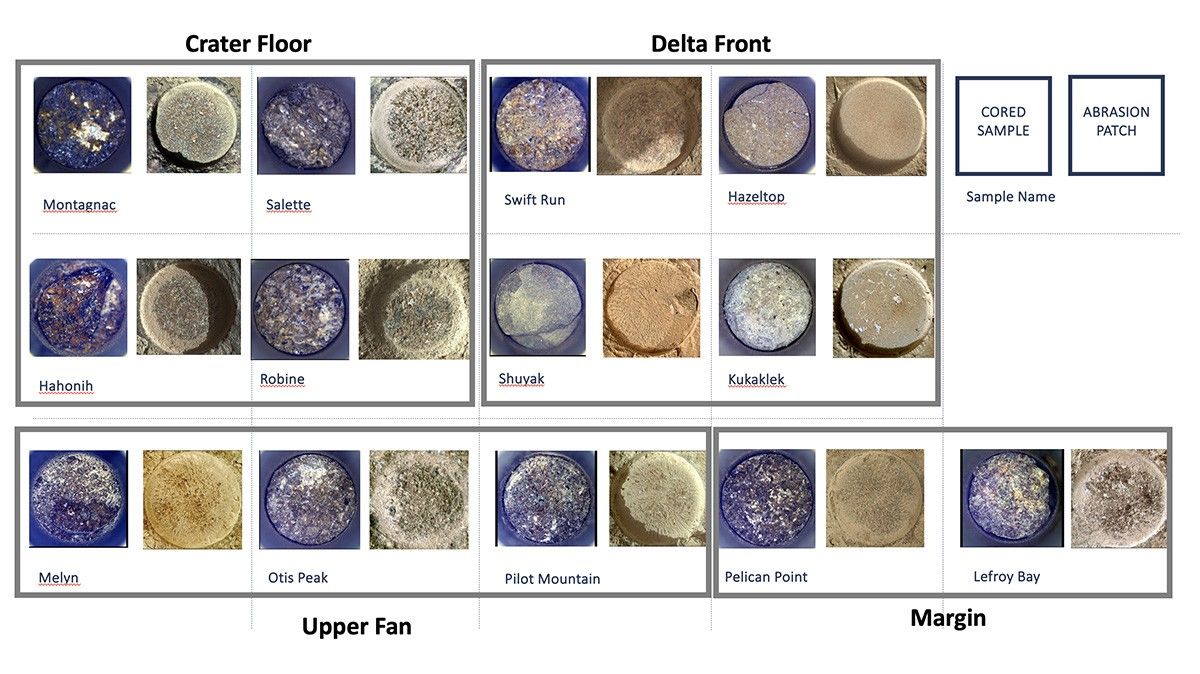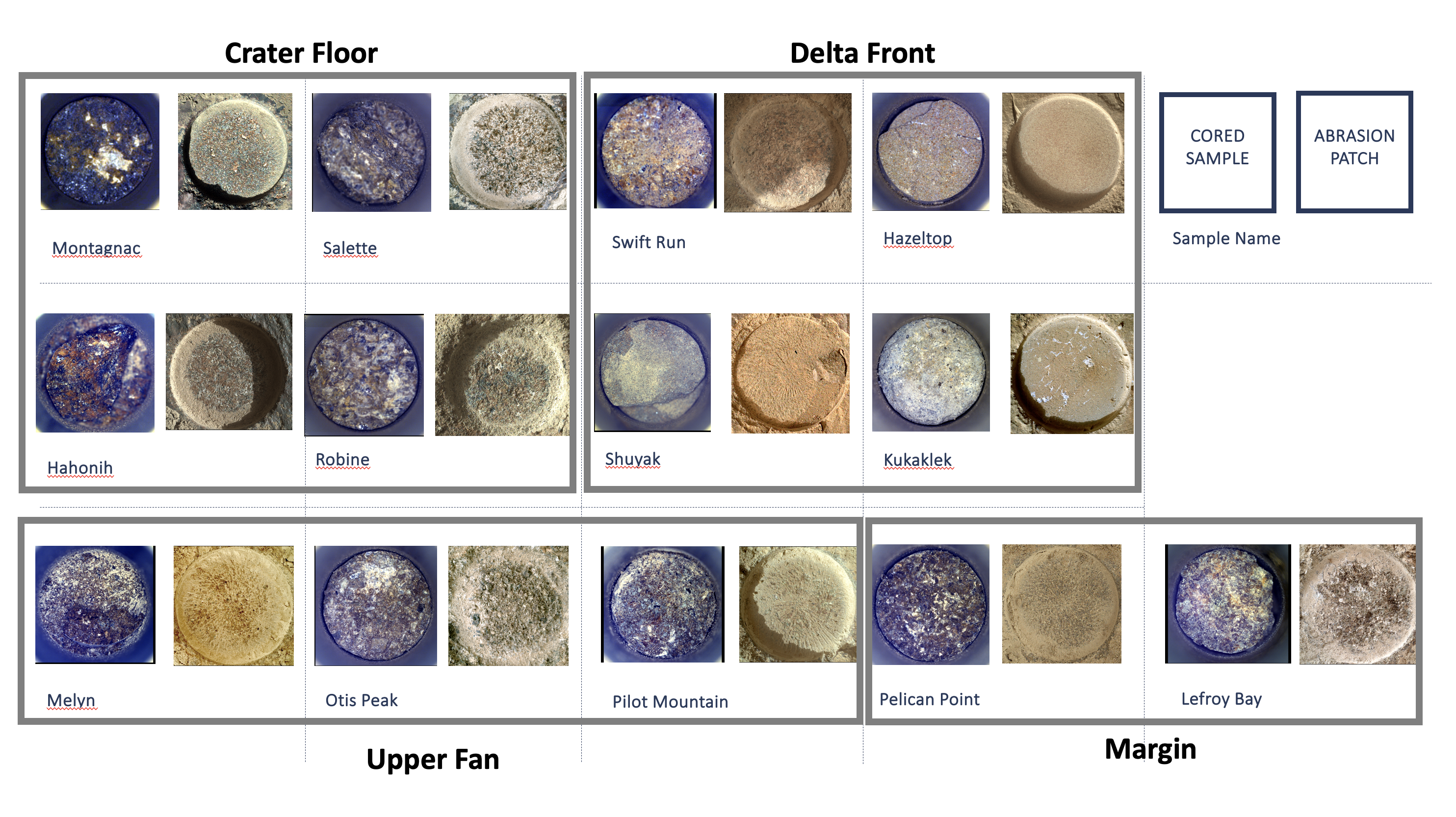Cored Samples Aboard Perseverance at Sol 1,000
| Credit | NASA/JPL-Caltech/ASU/MSSS |
|---|---|
| Language |
|
Shown here is an annotated representation of the 13 sample tubes containing rock-core samples that are being carried aboard NASA’s Perseverance rover as of Dec. 12, 2023, when the mission was marking its 1,000th Martian day, or sol, on the Red Planet. To the right of each sample is the associated abrasion patch that was created at the same location where the core was extracted.
The images of the samples and patches are grouped into gray boxes labeled with the name of the four rover science campaigns during which they were collected, from initial campaign to current: Crater Floor, Delta Front, Upper Fan, and Margin.
The images of the cored samples were collected by the Sampling and Caching System Camera (known as CacheCam). Directly below each image of a cored sample is its name, as chosen by the Perseverance science team.
The images of the abrasion patches were collected by the WATSON (Wide Angle Topographic Sensor for Operations and eNgineering) camera on the SHERLOC (Scanning Habitable Environments with Raman & Luminescence for Organics & Chemicals) instrument. WATSON is located at the end of Perseverance’s robotic arm, and takes images from about 3 inches (7 centimeters) away from each rock surface.
Perseverance abrades rocks using a tool on the robotic arm in order to clear away dust and any surface weathering or coatings. Then other instruments analyze the abraded patch to determine if scientists want to collect a sample from the rock. Each abraded patch is 2 inches (5 centimeters) in diameter.
WATSON was built by Malin Space Science Systems (MSSS) in San Diego and is operated jointly by MSSS and JPL.
A key objective for Perseverance’s mission on Mars is astrobiology, including the search for signs of ancient microbial life. The rover will characterize the planet’s geology and past climate, pave the way for human exploration of the Red Planet, and be the first mission to collect and cache Martian rock and regolith (broken rock and dust).
Subsequent NASA missions, in cooperation with ESA (European Space Agency), would send spacecraft to Mars to collect these sealed samples from the surface and return them to Earth for in-depth analysis.
The Mars 2020 Perseverance mission is part of NASA’s Moon to Mars exploration approach, which includes Artemis missions to the Moon that will help prepare for human exploration of the Red Planet.
NASA’s Jet Propulsion Laboratory, which is managed for the agency by Caltech in Pasadena, California, built and manages operations of the Perseverance rover.
For more about Perseverance: mars.nasa.gov/mars2020/






























